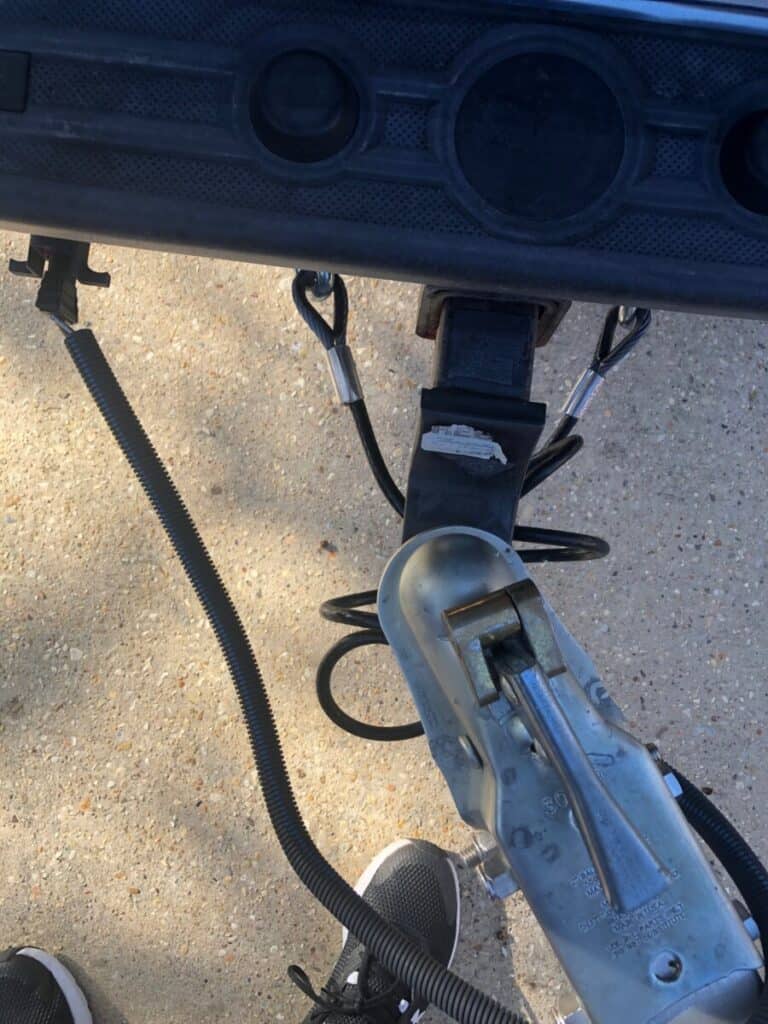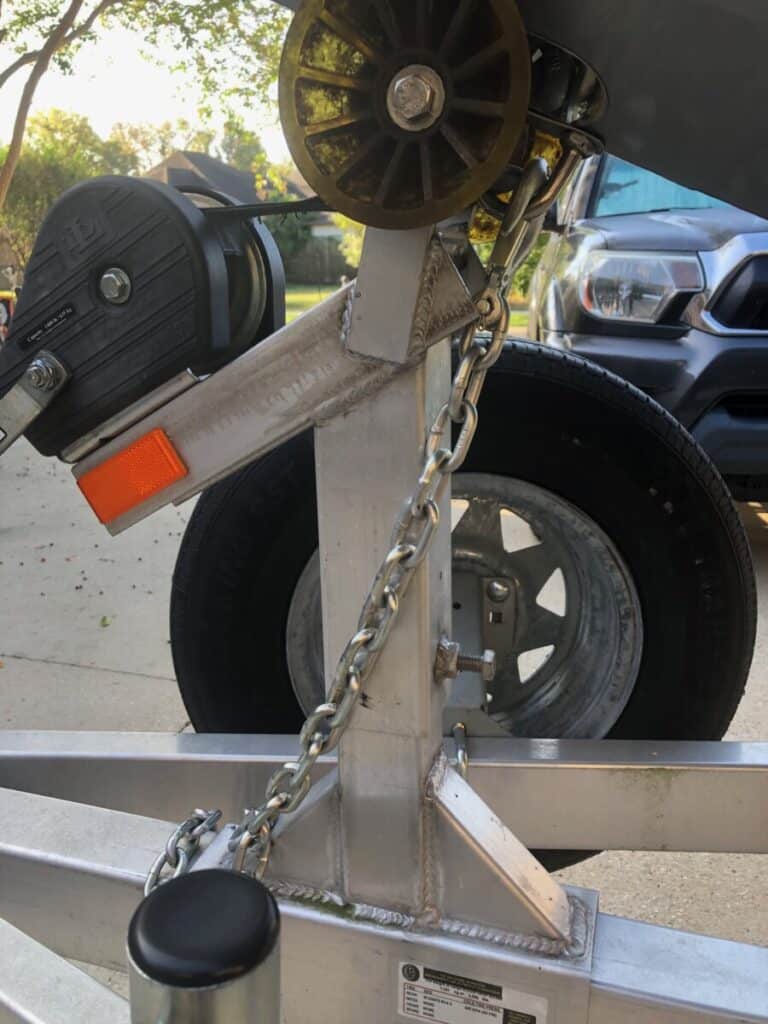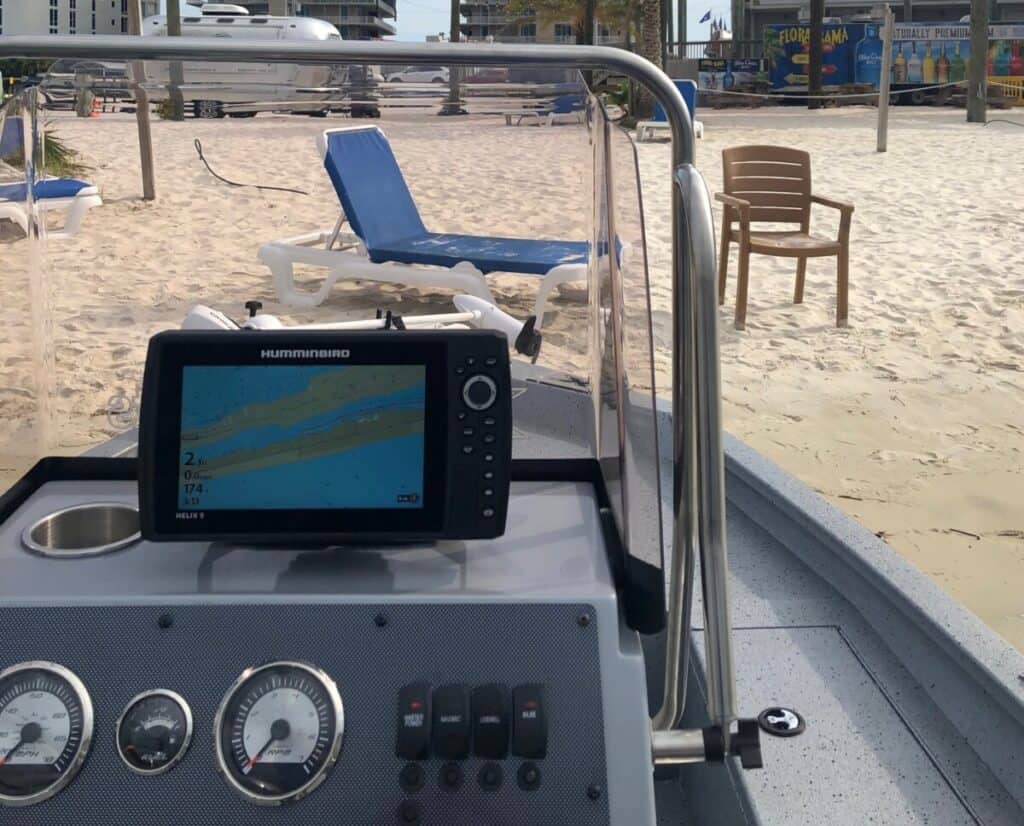Launching a boat can be an exciting adventure, setting the stage for memorable days on the water. However, getting your boat safely into the water requires careful planning and execution. From pre-launch preparations to choosing the right boat ramp, specific tips and techniques can make all the difference in ensuring a smooth and successful launch. This blog post will explore essential boat launch tips to help you quickly navigate the launch process, providing a safe and enjoyable boating experience. So, let’s dive in and discover how to set sail without a hitch!
Pre-Launch Preparation
Before anything, we need to do a pre-launch inspection of the boat. This way we can rectify any problems before having to deal with them on the water. Following a check-list like this will help to keep you and everyone on the water safe.
Safety First
The safety of yourself, your passengers, and other boaters is paramount. Before launching your boat, ensure all safety equipment is properly functioning and readily accessible. These include life jackets, fire extinguishers, distress signals, and navigation lights. Ensure you have an up-to-date first aid kit and familiarize yourself with its contents.
It’s always better to be safe than sorry when it comes to safety. Taking the time to do a thorough walkthrough of all of the boat’s failsafes can and will help you to avoid any unnecessary dangerous situations.
Mechanical Inspection
Schedule a thorough mechanical inspection of your boat’s engine and systems before launching. Hire a qualified marine mechanic to inspect the engine, fuel system, electrical components, and steering mechanisms. Your mechanical inspection will help identify potential issues and prevent breakdowns or malfunctions while on the water.
If you’ve ever found yourself dead in the water, then you know that it’s a situation to be avoided at all costs. If you don’t know how to diagnose and repair the more technical systems of your boat, make sure that you find someone who does before getting on the water.
Clean and Check
Be sure to regularly give your boat a thorough cleaning, inside and out. Remove debris, dirt, or grime from the hull, deck, and cockpit. Check for any signs of damage, such as cracks, dents, or loose fittings that may have been missed initially.
Inspect the propeller for any damage or obstructions. A clean and well-maintained boat not only looks great but also performs optimally, so save yourself some money on gas by cleaning your watercraft periodically throughout the year.
Fuel and Fluids
Ensure that your boat has adequate fuel for the planned journey so that you don’t end up cutting the day short. Fuel can be expensive, but it’s just one of those inherent costs that come with boating.
Check all fluid levels, including engine oil, coolant, and hydraulic fluids. Top off as necessary to avoid any unwanted damage and extend the life of your engine.
Batteries can drain over time, even when unused. Remember to check the battery charge and test the bilge pump to ensure it functions correctly.
Trailer Check
If you use a trailer to launch your boat, inspect it thoroughly. Check the tires for proper inflation and tread wear. New boats can cost upwards of $100,000, so we want to avoid a high-speed blowout on the highway at all costs.
Ensure all lights work correctly, including brake lights, turn signals, and markers. Lubricate the trailer hitch and ensure it is securely attached to your vehicle.



Navigation Aids
Update your charts or GPS with the latest navigational information. Ensure that all electronic aids, such as depth finders and radar, work. This will keep you safe, as well as help to find those pockets of fish if you are an angler.
Electronics can fail, so it’s always wise to keep a backup paper chart on board as a precautionary measure. Familiarizing yourself with a physical map and local landmarks can help save some time in an emergency scenario.
Stock Supplies
Before heading out onto the water, stock up on essential supplies. These include ample drinking water, sunscreen, food, and personal medications. Plan ahead and bring more than you think will be used so that you are covered if something unforeseen comes up.
Don’t forget to bring a fully charged cell phone or marine radio for communication. Cell phone service can be sparse in rural areas, which is where a marine-band radio comes in. It’s always better to be overprepared than underprepared in this department.
Choosing the Right Boat Ramp
Boat ramps can vary widely in their condition and layout. Certain ramps are created to service larger numbers of boaters, but this isn’t always the case. You will thank yourself later by planning ahead and doing some research on the local boat ramps in your area.
Research Available Boat Ramps
Not all boat ramps are created equal. Before heading out to launch your boat, take the time to research the available boat ramps in your area. You want to look for ramps that are conveniently located near your desired boating destination.
Considering factors such as distance from your starting point, accessibilityand ease of navigation will reduce the amount of work that goes into having a great day on the water.
Proximity and Parking Availability
Choose a boat ramp within a reasonable distance from your starting point. This will help minimize travel time and ensure you can quickly get your boat in the water. That said, your vehicle most likely gets better gas mileage than your boat. If you are trying to get to a specific area, like your favorite fishing spot, consider the distance you will have to travel on the water to get there.
Additionally, consider the availability of parking spaces at the boat ramp. Ensure that there is sufficient parking for both your towing vehicle and trailer. Boat ramps can get very hectic during holidays, so make sure you are comfortable launching your boat in a potentially busy area.
Water Conditions
Evaluate the water conditions surrounding the boat ramp. Look for ramps that provide easy access to calm and navigable waters. Consider factors such as tides, currents, and potential hazards like submerged objects or shallow areas.
Always check the direction of the wind before launching so that you can anticipate how difficult it will be to get your boat in and out of the water. Opting for a boat ramp with favorable water conditions will make launching your boat safer and more convenient.
Amenities and Facilities
Check if the boat ramp offers amenities and facilities to enhance your boating experience. Some ramps may have restrooms, picnic areas, or nearby marinas where you can refuel or replenish supplies. Access to these amenities can add convenience and comfort to your boating adventure.
Local Knowledge and Recommendations
Tap into the local boating community for recommendations on the best boat ramps in your area. Local boaters often know firsthand the ramps’ conditions, ease of use, and potential challenges. Online boating forums or social media groups can be great resources for gathering valuable insights from experienced boaters.
Arrive Early
We all know the early bird gets the worm. Arriving early is advisable to avoid long waits and congestion at the boat ramp. Launching your boat during non-peak hours or weekdays can help you beat the crowds. Remember, a stress-free launch sets the tone for an enjoyable day on the water.
Launching Process
Backing Up the Trailer
When backing up your trailer towards the water, it’s essential to take your time and stay focused. Use your mirrors to guide you and adjust the steering wheel as needed. Communicate with a spotter who can provide guidance and help you avoid obstacles. Practice backing up your trailer beforehand to build confidence and improve your skills.
Launching the Boat
Once your trailer is in the water, put the vehicle in park and don’t forget to engage the parking break. Slowly release the straps or chains holding the boat to the trailer, ensuring control of the vessel at all times. If launching alone, use a line to secure the boat to the dock or have a plan to maintain control during the process.

Maneuvering into the Water
With the boat adequately secured, it’s time to maneuver it off the trailer and into the water. Slowly back up the vehicle, allowing the boat to slide off the trailer smoothly. Keep a steady hand on the wheel, correcting minor adjustments as needed. Once the boat is floating freely, disconnect it from the trailer and move it away from the ramp area.
Post-Launch Procedures
Before you get too far from the ramp, it’s always a good idea to double-check everything. Getting in the habit of giving your boat a final look before setting off on a day of fun is an easy way to stay safe that all boaters should practice.
Secure Your Boat
Once your boat is in the water, take the time to secure it properly. Double-check that all lines, cleats, and fenders are in place to prevent unnecessary movement or damage while docked or moored. Adjust the lines as needed to ensure your boat is secure and won’t drift away. A boat adrift can end up being costly and dangerous, so be sure to focus on the task at hand.
Check for Leaks or Water Intrusion
Inspect your boat for any signs of leaks or wet spots. Examine the bilge area and compartments for water accumulation. If you notice any leaks, address them immediately to prevent further damage. Identifying and rectifying any issues is crucial before heading out onto the water, so you may have to put your day on hold to remedy these problems for safety’s sake.
Test Navigation and Safety Equipment
Verify that all navigation and safety equipment are functioning correctly. Test the operation of navigation lights, horn, compass, depth finder, GPS, and other electronic devices on board. Ensure that your flotation devices (PFDs) are readily accessible and in good condition.

Plan Your Route and Destination
Before setting off on your boating adventure, plan your route and destination. Consider factors such as navigational hazards, water depth, and areas to avoid. Review charts or GPS systems to ensure you have accurate and up-to-date information. Inform someone ashore about your plans and estimated return time.
Monitor Fuel and Battery Levels
Time flies when we are having fun, so be sure to regularly monitor your fuel and battery levels throughout your boating excursion. Avoid running out of fuel by keeping track of your consumption and refueling as necessary. Stay aware of your battery charge to prevent any unexpected power failures.
Clean-Up and Maintenance
After enjoying a long day on the water, take the opportunity to clean up your boat and perform basic maintenance tasks. This includes removing any trash or debris from the deck and cockpit, rinsing off saltwater or freshwater residue to prevent corrosion, and inspecting your boat for any visible damage.
Safety Tips
Here are a few important safety tips to consider when boating. There is plenty of time and thought that goes into boating, so it’s easy to overlook certain things. As we mentioned earlier, the more you put these safety checks into practice, the more second nature they will become.
Wear Life Jackets
One of the most crucial boating safety tips is to wear a properly fitting life jacket or personal flotation device (PFD). Ensure that a sufficient number of PFDs are available on board for every passenger. Wearing a life jacket can save lives in an accident or emergency, especially for inexperienced swimmers.
You can also be ticketed for having insufficient PFDs on the craft, so make sure you have enough for every passenger.
Know the Rules and Regulations
Familiarize yourself with the boating rules and regulations specific to your area. Each jurisdiction may have restrictions regarding speed limits, navigational aids, and right-of-way. Understanding and adhering to these guidelines will help prevent accidents and conflicts on the water.
Check Weather Conditions
Always check the weather forecast before heading out on a boating trip. Sudden storms or unfavorable weather conditions can pose significant risks on the water. If adverse weather is on the horizon, consider postponing your trip or adjusting your itinerary to prioritize safety.
Practice Responsible Navigation
Follow safe navigation practices to avoid collisions and hazards on the water. This includes maintaining a safe and appropriate speed, looking for other vessels, and understanding navigational aids such as buoys and markers. Be mindful of swim areas, wildlife habitats, and other sensitive areas, respecting and protecting the environment for future generations.
Inform Others of Your Plans
Before embarking on a boating trip, inform someone on land about your plans. Provide them with your intended route, destination, and estimated return time. This ensures that someone knows your whereabouts in an emergency and can alert authorities if necessary.
Final Thoughts
Having a memorable day on the water can seem like a lot of work, but in the end, it’s always worth it. Taking the time to perform regular maintenance on your boat and plan your day can significantly reduce the number of headaches that are associated with boating. Put these procedures into practice, and eventually, they will become second nature, ensuring that you have more great days on the water every boating season.
